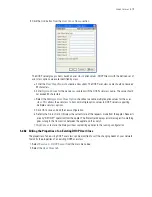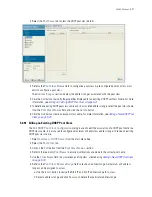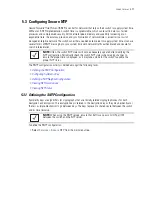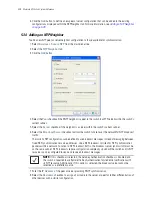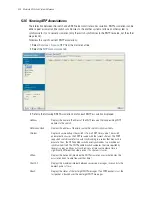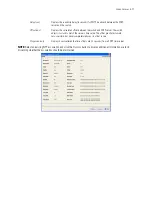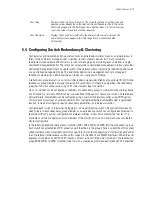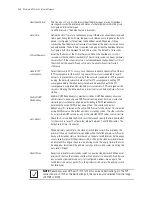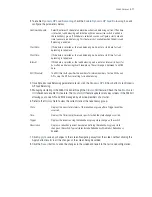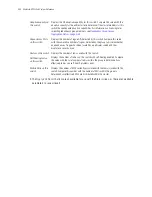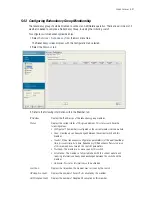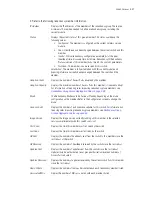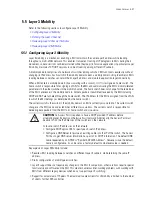
Switch Services
5-33
5.4 Configuring Switch Redundancy & Clustering
Configuration and network monitoring are two tasks a network administrator faces as a network grows in
terms of the number of managed nodes (switches, routers, wireless devices etc.). Such scalability
requirements lead network administrators to look for managing and monitoring each node from a single
centralized management entity. The switch not only provides a centralized management solution, it provides
centralized management from any single switch in the network without restricting or dedicating one switch
as a centralized management node. This eliminates dedicating a management entity to manage all
redundancy members and eliminates the possibility of a single point of failure.
A redundancy group (cluster) is a set of switches (nodes) uniquely identified by group/cluster ID. Within the
redundancy group, members discover and establish connections to other group members. The redundancy
group has full mesh connectivity using TCP as the transport layer connection.
Up to 12 switches can be configured as members of a redundancy group to significantly reduce the chance
of a disruption in service to WLANs and associated MUs in the event of failure of a switch or intermediate
network failure. All members can be configured using a common file (cluster-config) using DHCP options.
This functionality provides an alternative method for configuring members collectively from a centralized
location, instead of configuring specific redundancy parameters on individual switches.
Configure each switch in the cluster by logging in to one participating switch. The administrator does not
need to login to each redundancy group member, as one predicating switch can configure each member in
real-time without “pushing” configurations between switches. A new CLI context called "cluster-cli" is
available to set the configuration for all members of the cluster. All switch CLI commands are considered
cluster configurable.
In the following example, there are four switches (WS1, WS2, WS3 and WS4) forming a redundancy group.
Each switch has established a TCP connection with the others in the group. There is an additional CLI context
called cluster-context. A user/administrator can get into this context by executing a "cluster-cli enable" under
the CLI interface (future releases will have this support in the Web UI and SNMP interfaces). When the user
executes this command on WS1, WS1 creates a virtual session with the other switches in the redundancy
group (WS2, WS3 and WS4). Once the virtual session is created, any command executed on WS1 is executed
Root delay
The total round-trip delay in seconds. This variable can take on both positive and
negative values, depending on the relative time and frequency offsets. The values
that normally appear in this field range from negative values of a few milliseconds
to positive values of several hundred milliseconds.
Root Dispersion
Displays the nominal error relative to the primary time source in seconds. The
values that normally appear in this field range from 0 to several hundred
milliseconds.
Summary of Contents for RFS Series
Page 1: ...M Motorola RFS Series Wireless LAN Switches WiNG System Reference Guide ...
Page 10: ...TOC 8 Motorola RF Switch System Reference Guide ...
Page 56: ...2 8 Motorola RF Switch System Reference ...
Page 334: ...5 52 Motorola RF Switch System Reference 2 Select the MU Status tab ...
Page 510: ...7 32 Motorola RF Switch System Reference Guide ...
Page 534: ...8 24 Motorola RF Switch System Reference Guide ...
Page 570: ...C 14 Motorola RF Switch System Reference Guide ...
Page 589: ......

